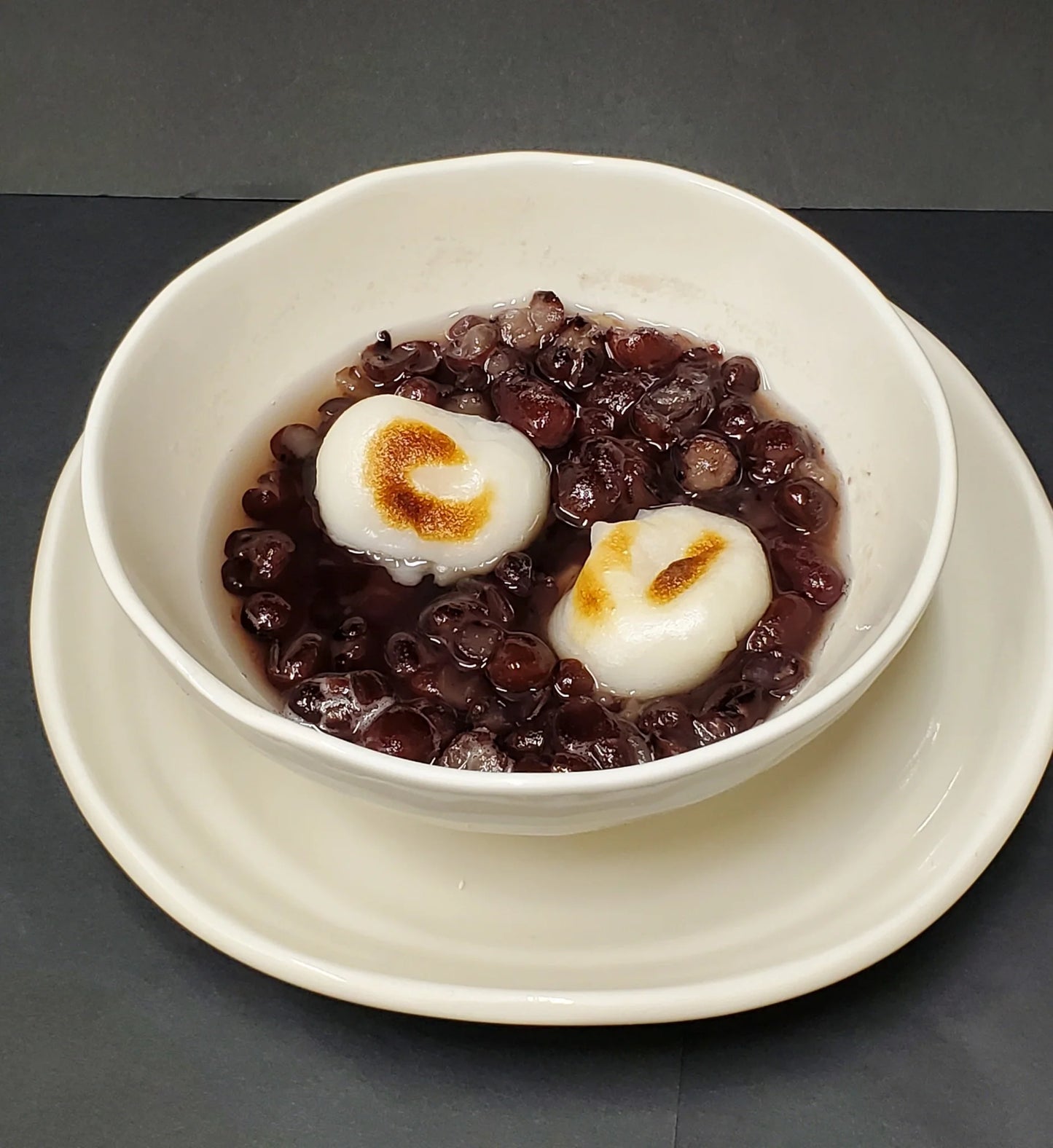
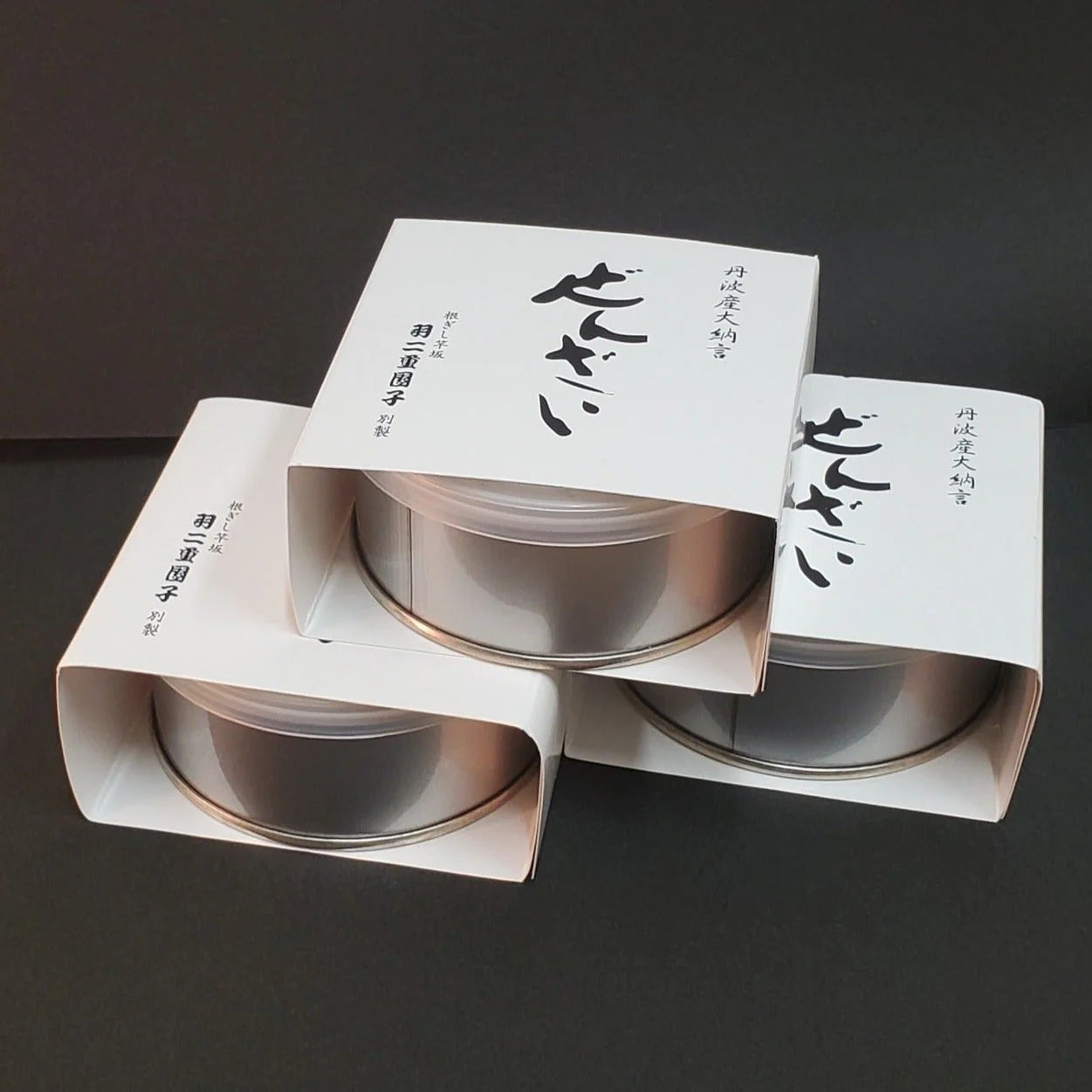

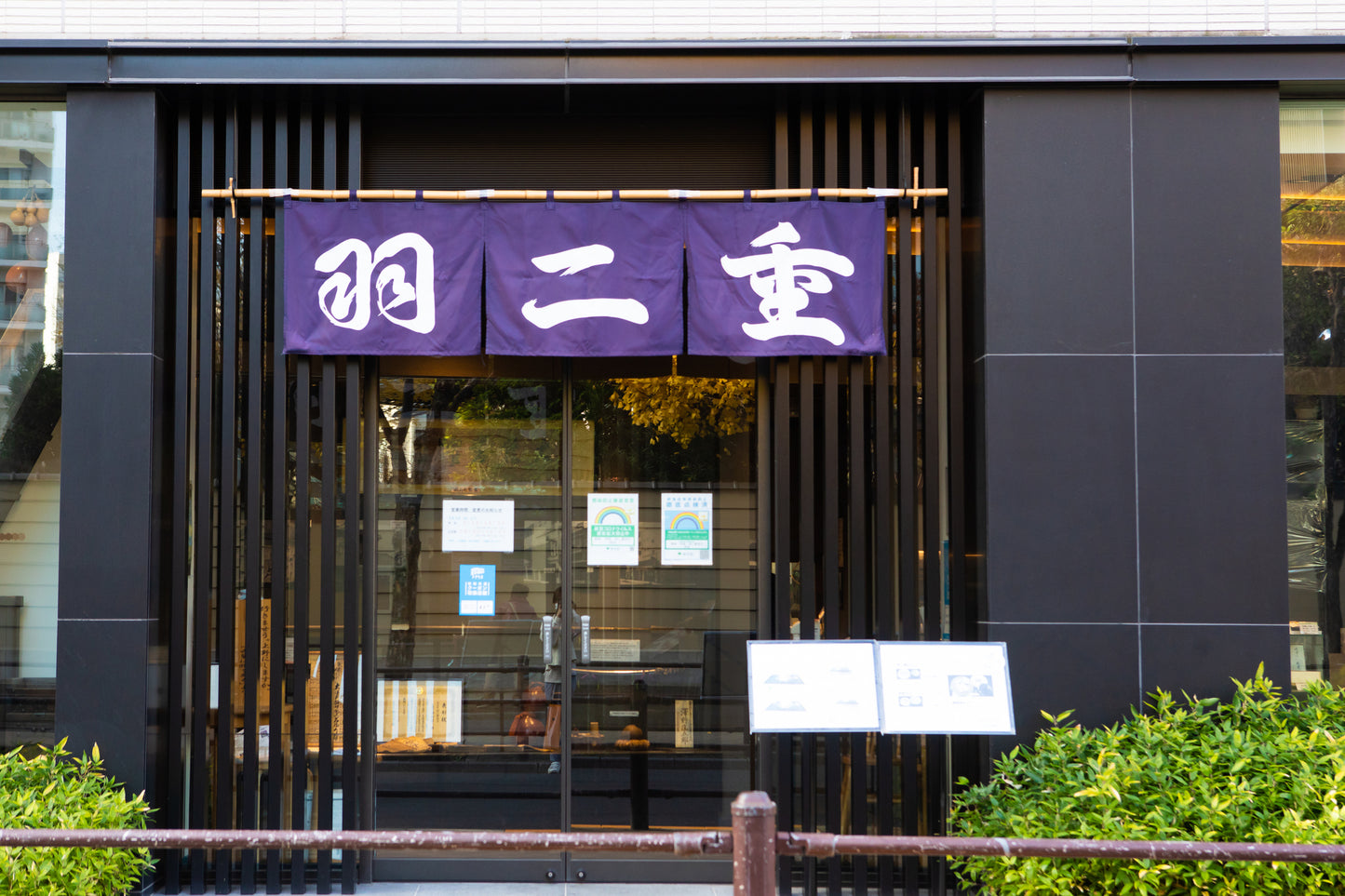
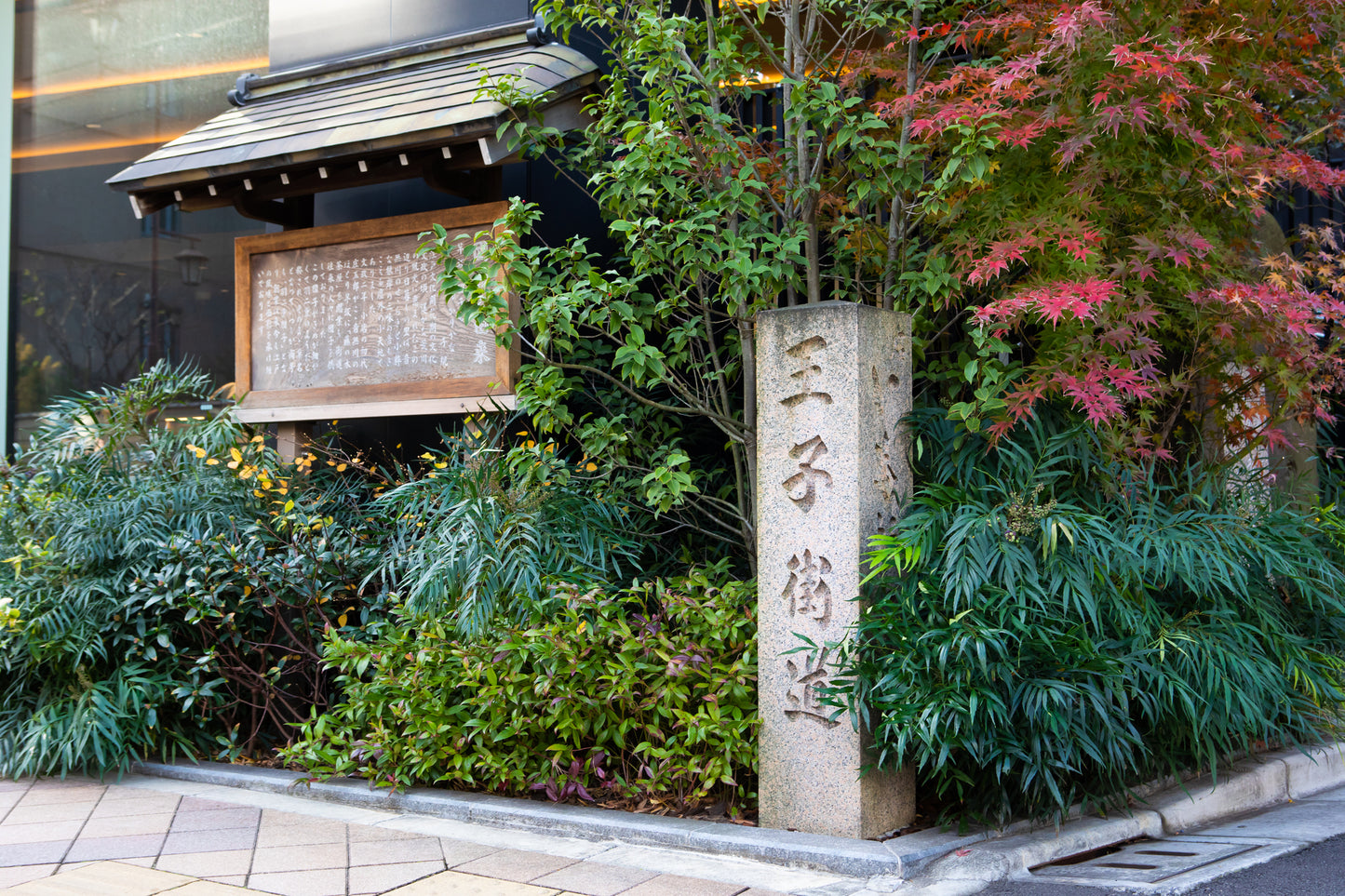
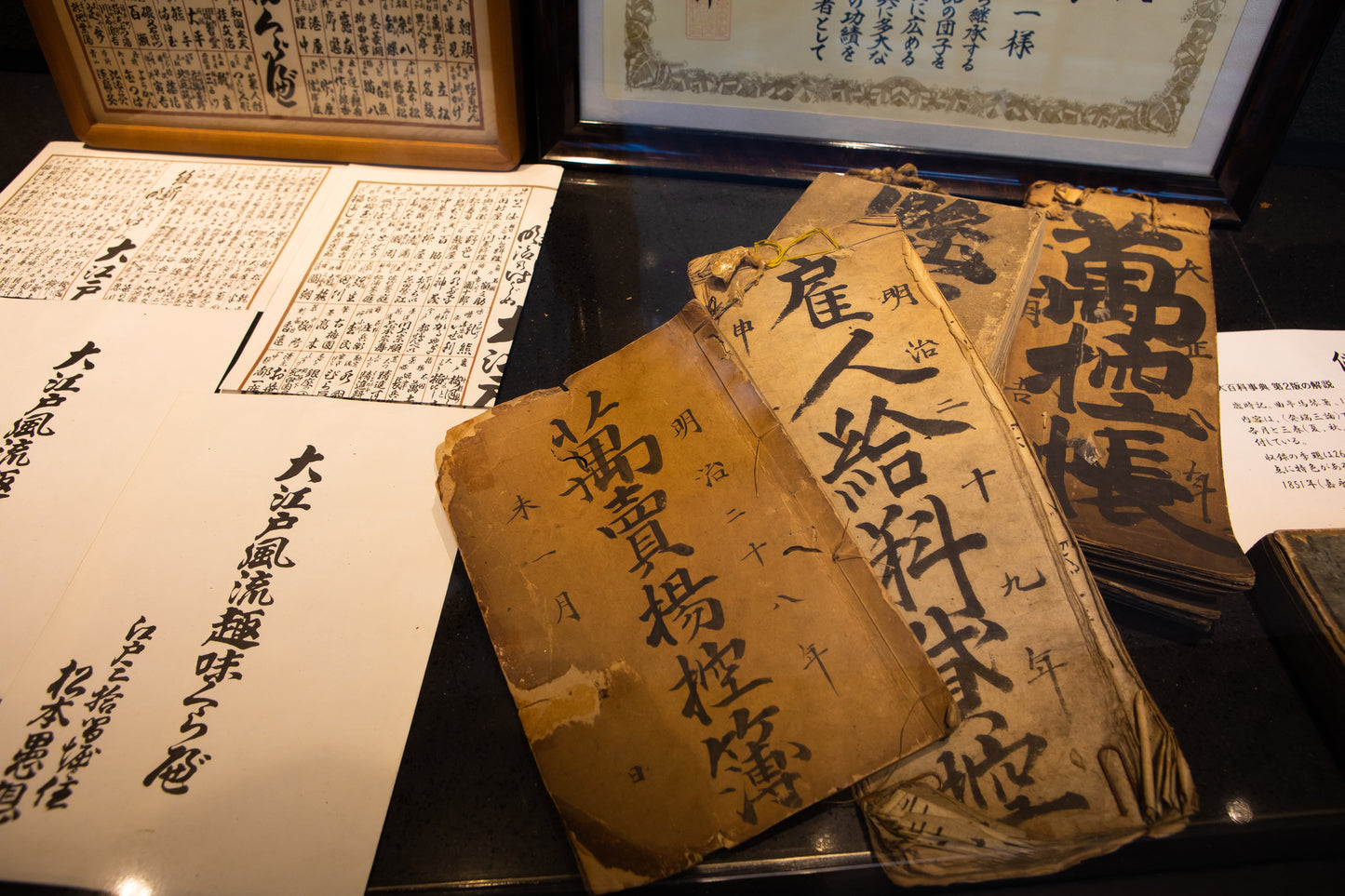
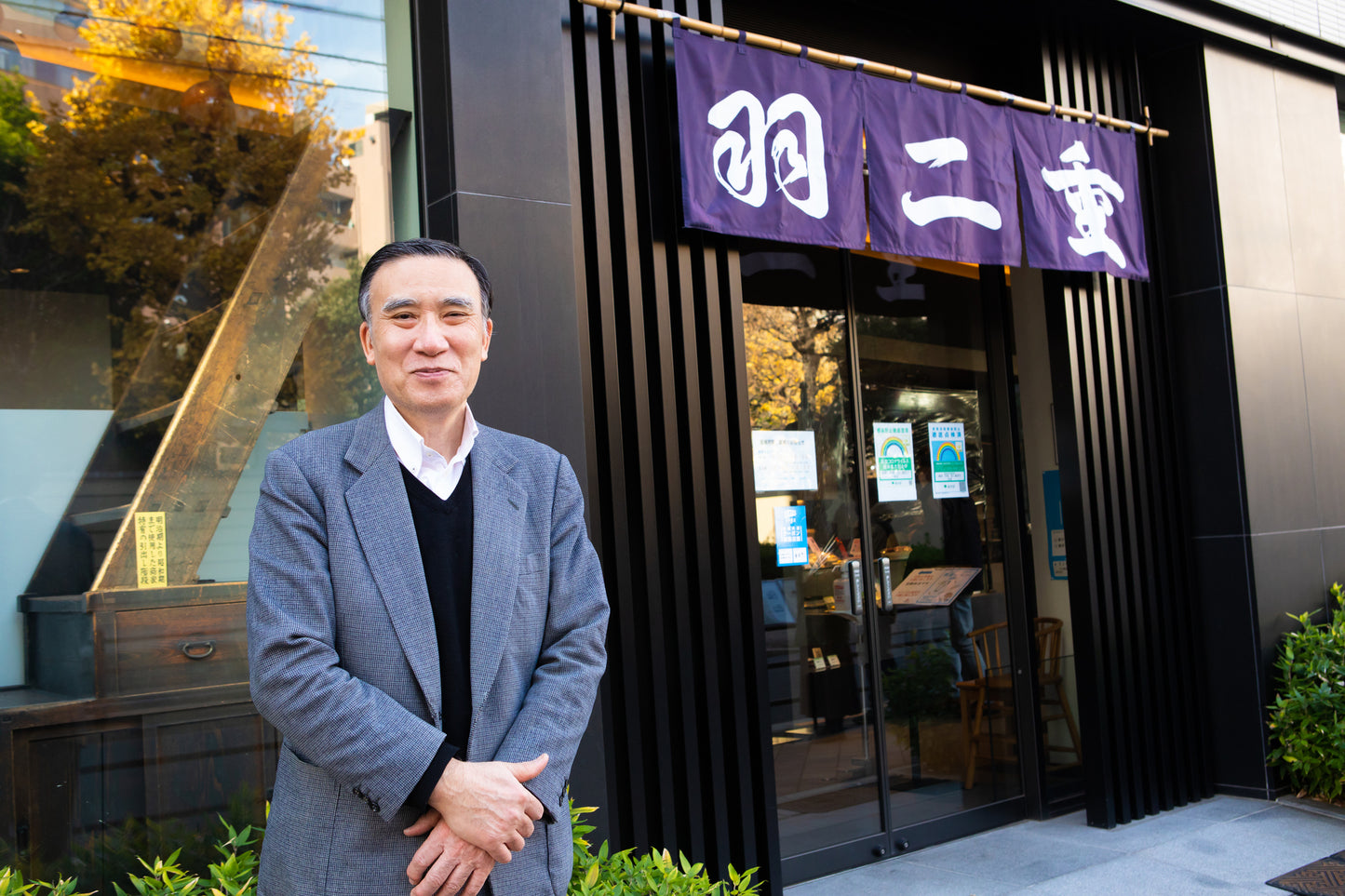
羽二重団子(Habutae Dango)
Since the Edo period, the village of Negishi in Kuretake, the home of the Nipporini, has been known as a small paradise outside of the dusty city, surrounded by the clear waters of the Otonashi River. Blessed with flowers and bush warblers, streams and deer, and the scenic beauty of the distant Arakawa River, people competed with each other to build their villas here. The area was a coveted place for chic and elegant residences until the Meiji-Taisho period (1868-1912).
In 1868, Shogoro Shogoro, the founder of Koyoten, opened Fujinoki Jaya (Fujinoki Tea House) at the present location on Imozaka by the Otonashi River, serving dumplings to passersby along the street. These dumplings were praised for their fine texture and resemblance to Habutae dumplings, and this became the name of the confectionery, and the trade name was eventually changed to "Habutae Dumpling. In the 180 years since its establishment six generations ago, the company has continued to carry on the flavor and appearance of the Edo period.
Dumplings were originally a confectionery with a Chinese origin, but became popular in the Edo period (1603-1868). In the Genroku period (1688-1704), specialty dumplings appeared everywhere and became a fad. Today, however, it is somewhat sad to note that the famous dumplings from long ago are rarely seen in Tokyo.
Haniage dumplings are known for their luster, stickiness, and firm texture. The dumplings are made from carefully selected rice flour, pounded, rounded, and skewered flat. We sell two types of dumplings: traditional baked dumplings with soy sauce and dumplings with sweet bean paste. We are proud of the fact that our dumplings are unique in Tokyo today because of the patronage we have received over the generations, and we are proud to be in business.











